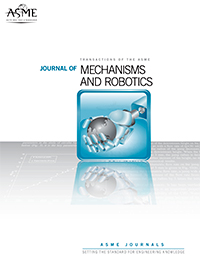Abstract
This paper illustrates the design and testing of a lower limb exoskeleton for walking assistance. First, the biomechanics of the human knee and ankle joints during walking and the strategy of energy recycling and releasing are introduced. Next, the hardware design of the exoskeleton is described. The exoskeleton is primarily composed of a waist module, a knee module, and an ankle module. Two clutch mechanisms are designed for one-way motion transmission, and an energy storage spring is designed to store the energy recycled from the human knee motion. Additionally, the modeling of the human-exoskeleton system is presented. Finally, experiments are conducted to verify the effectiveness of the developed exoskeleton. The experimental results demonstrate that the exoskeleton has the potential to recycle the negative work from the wearer’s knee flexion during the late stance phase and knee extension during the swing phase to assist the wearer’s ankle plantarflexion during the stance phase. During a gait cycle, reductions of 11.6% and 15.6% of the average muscle activities of the gastrocnemius and soleus are observed, respectively. In addition, the peak gastrocnemius and soleus activities during the push-off stage are reduced by 16.9% and 42.6%, respectively.












